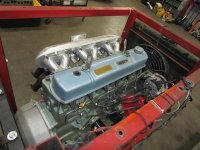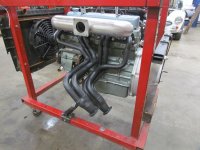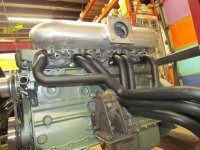HealeyPassion
Jedi Warrior
Offline
As a few of you know, I built a EFI AH a few years back... a Works Rally Tribute car with EFI (pic. attached). On that car, I went to great lengths to hide the EFI so the engine simply looked like a vintage tri-carb setup (pic. attached). It worked well. I've since sold the car to a gentleman in Australia. Now I'm working on another EFI Healey... another BJ7. This time I decided rather than hide the EFI I was going to try to optimize the injection system without regard to the original look. To that end, I decided to make an intake manifold expressly for injection. You may have seen a short 1 minute video of an initial test we did on the first version of that manifold (and ancillary components). It worked very well but there were some problems with the Weber castings I used, which were completely unrelated to the EFI manifold. Without boring you with details, I decided the, what I'm calling Version 1 manifold, was not going to be the final. So, I got another set of Weber manifolds, from a different source, and began Version 2 of the manifold. Besides being a much more robust casting than the previous one, I changed a number of the design elements to improve injector access. Yesterday, we (Chris Mack of Maxinnovation and I) finished the near final Version 2 EFI manifold for my Healey (pic. attached). It still needs final welding and metal finishing, but you'll get the idea.
The engine is now together awaiting external components (EFI manifold, headers, etc.). The goal is to start the engine on a run-in stand sometime in the next 3 weeks. Besides the EFI stuff, the engine has a head extensively modified by Hap Waldrop (Acme Speed Shop in SC), a custom cam by Dema Elgin (Elgin Cams in CA), rocker arm assembly reprofiled by Gary (Rockers Arms Unlimited in CA), machining by Ridge Reamer in CO, and assembly by Ted Ax (Ax and Allies in CO) and a bunch of other details.
I'll fill you in when we've done the run-in.
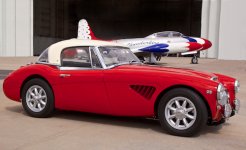
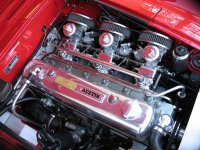
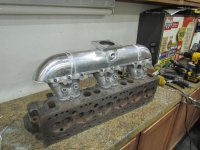
Steve
The engine is now together awaiting external components (EFI manifold, headers, etc.). The goal is to start the engine on a run-in stand sometime in the next 3 weeks. Besides the EFI stuff, the engine has a head extensively modified by Hap Waldrop (Acme Speed Shop in SC), a custom cam by Dema Elgin (Elgin Cams in CA), rocker arm assembly reprofiled by Gary (Rockers Arms Unlimited in CA), machining by Ridge Reamer in CO, and assembly by Ted Ax (Ax and Allies in CO) and a bunch of other details.
I'll fill you in when we've done the run-in.



Steve
Last edited:

 Hi Guest!
Hi Guest!

 smilie in place of the real @
smilie in place of the real @
 Pretty Please - add it to our Events forum(s) and add to the calendar! >>
Pretty Please - add it to our Events forum(s) and add to the calendar! >> 


